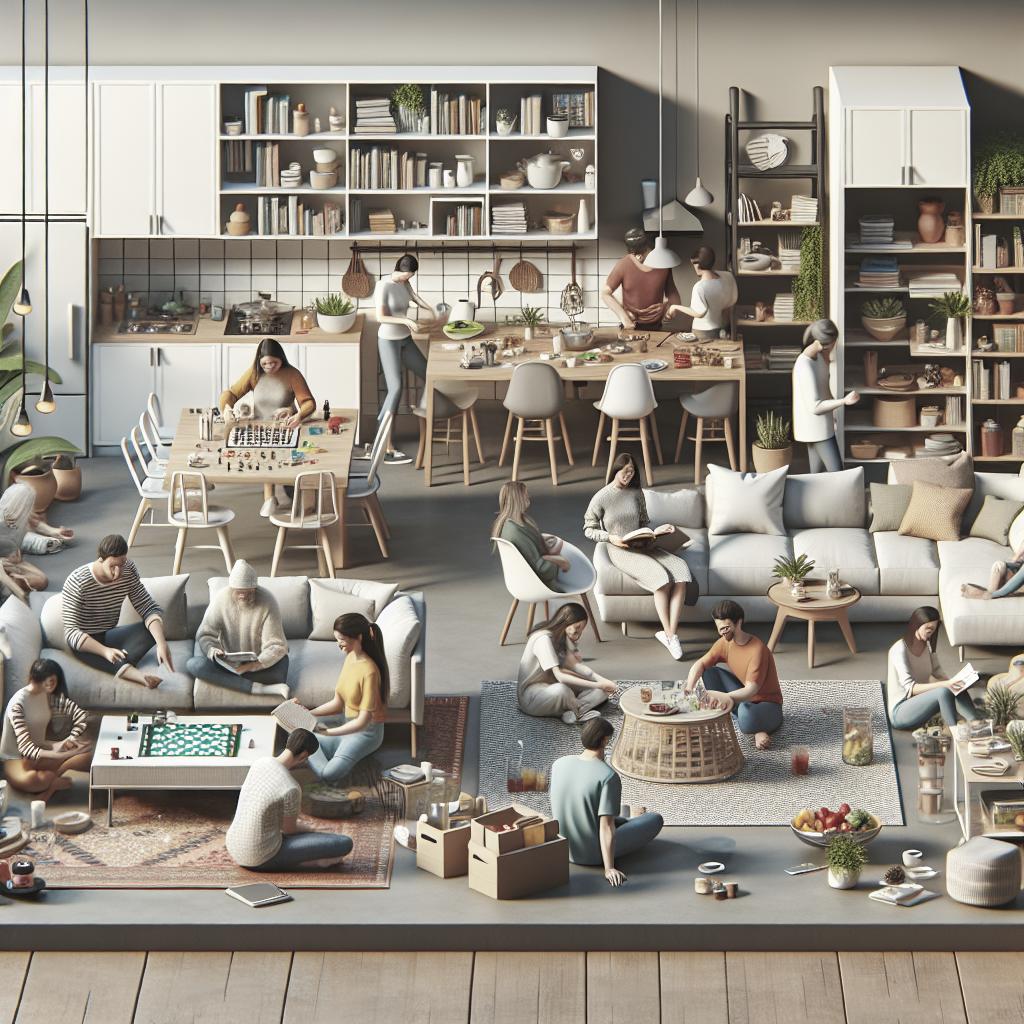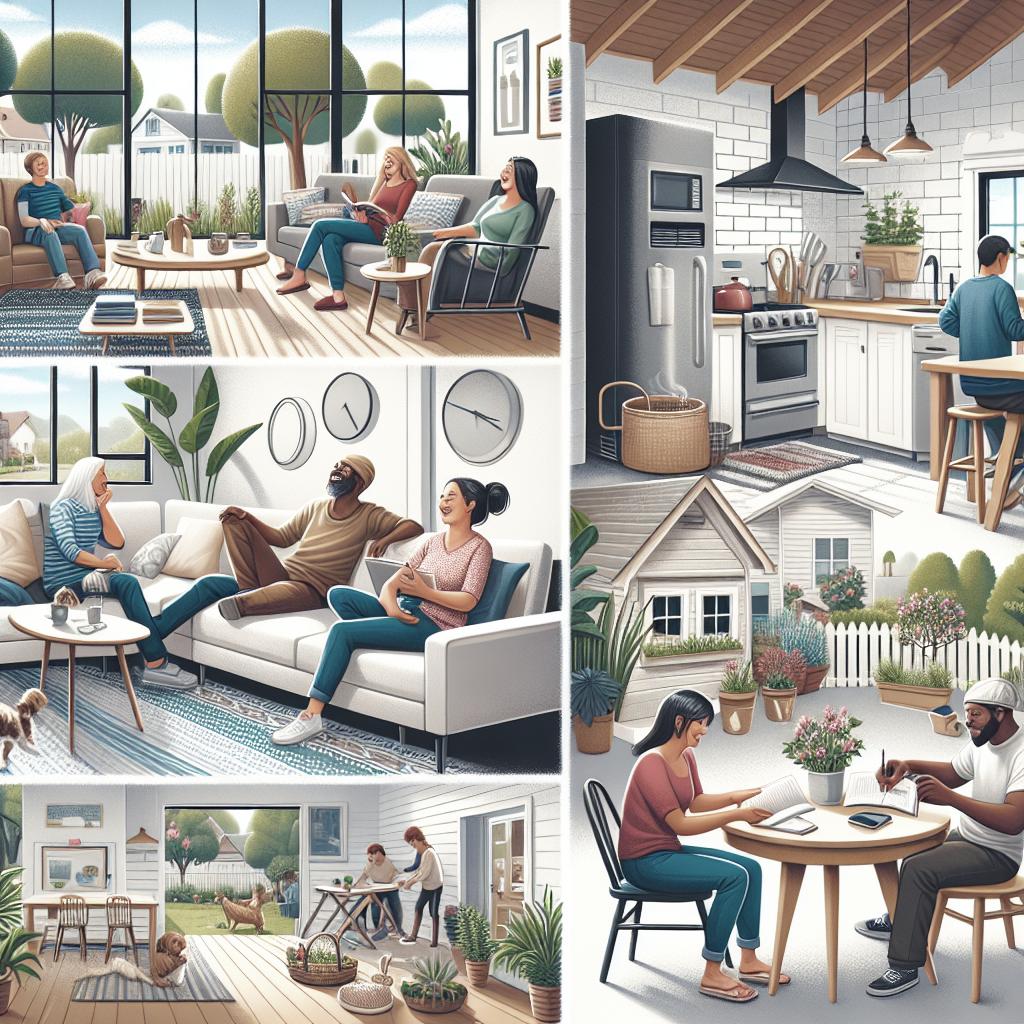Common Activities in Communal Living Spaces
Communal living spaces, known for fostering community and collaboration, host a variety of activities that draw people together. These interactions not only enhance personal growth but also enrich collective experiences. In this blog post, we will explore some of the most common activities that occur in these vibrant environments. We will delve into skill-sharing sessions where residents exchange knowledge, the power of mastermind or brainstorming groups, engaging dialogue sessions that facilitate understanding, and communal projects that build a shared sense of purpose. Finally, we will discuss the reasons why coliving spaces organize such activities, emphasizing their importance in building a cohesive and supportive community.
Skill-sharing
Skill-sharing is a cornerstone activity in communal living spaces. Residents often boast diverse backgrounds and expertise, making skill-sharing a valuable exchange. These sessions can vary from language lessons and cooking demonstrations to technical workshops and creative writing classes. The idea is to provide a platform where individuals trade their unique skills with others, promoting personal growth and community knowledge.
Such sessions break down the barriers to learning. Residents feel more at ease stepping out of their comfort zones in the informal setting of their own home. Skill-sharing sessions also foster friendships and strengthen the community bond. As trust builds, participants are more willing to share their knowledge and learn from others.
Moreover, skill-sharing enhances networking opportunities. Residents who participate can connect with like-minded individuals and perhaps collaborate on larger ventures outside the communal space. This active learning environment is key to personal and professional development, making coliving spaces appealing to those seeking community-driven growth.
Mastermind/Brainstorming Sessions
Mastermind or brainstorming sessions catalyze innovation and problem-solving within coliving environments. These allow residents to come together to share ideas, provide feedback, and strategize potential solutions to challenges they face, whether individually or as a community. This collective approach fosters creativity and innovation as diverse perspectives intersect.
The informal atmosphere of a communal living space adds to the effectiveness of these sessions, encouraging open dialogue and collaboration. This enhances trust among participants and often results in ideas that wouldn’t have emerged in a more traditional, competitive setting. The synergy developed in these sessions can lead to innovative projects or businesses launched by coliving members.
Dialogue Sessions
Dialogue sessions in coliving spaces aim to build bridges among diverse groups. These sessions provide a platform for residents to express their thoughts and experiences on various subjects, including personal development, cultural differences, and societal challenges. The purpose is to deepen understanding among residents, showcasing the diversity of perspectives within the community.
Such sessions are structured to encourage active listening and constructive feedback. This not only enhances empathy but also strengthens the community by fostering respect and appreciation for differing viewpoints. The presence of varied perspectives enriches discussions, contributing to a broader understanding of global and local issues.
Dialogue sessions instill a culture of open communication and mutual respect. As residents become more accustomed to discussing challenging topics, they also contribute to a harmonious living environment. This ability to navigate complex conversations has practical benefits in day-to-day interactions and larger communal decision-making processes.
Communal Projects
Communal projects in coliving spaces are pivotal to bonding and creating a shared sense of achievement. These projects can range from organizing events or developing shared gardens and co-creating art installations. Residents contribute their unique skills and resources toward a common goal, fostering teamwork and collaboration.
These projects serve the dual purpose of improving the communal space and enhancing the well-being of its residents. By working together on tangible projects, residents deepen their sense of belonging and ownership over the space. This collaborative environment nurtures relationships that are supportive and fulfilling.
Moreover, communal projects align with sustainable and community-focused living ideals. Residents actively engage in efforts to make their living space more eco-friendly or self-sufficient. These projects often have a lasting impact, positively influencing how residents perceive and interact with their environment.
Why Do Coliving Spaces Organize Activities Like These?
Coliving spaces organize these activities primarily to build a vibrant and supportive community. Activities like skill-sharing and brainstorming sessions help residents connect on common interests, facilitating personal growth and collective innovation.
Such activities are also crucial for enhancing residents’ well-being. By participating in communal projects or dialogue sessions, individuals can feel more fulfilled and connected. This aspect of coliving cultivates a sense of belonging that is often missing in traditional housing arrangements.
Moreover, these activities encourage residents to value diversity and embrace inclusiveness. By respecting and understanding varied perspectives through dialogue sessions and collaborative projects, residents not only live but thrive in their communal homes. This approach underlines the progressive ethos of coliving spaces: building communities that are not only living quarters but thriving hubs of interaction and mutual growth.
Summary of Main Points
| Activity | Description | Benefits |
|---|---|---|
| Skill-sharing | Exchange of knowledge among residents, ranging from workshops to demonstrations. | Promotes learning, builds trust, and enhances networking opportunities. |
| Mastermind/Braindstorming Sessions | Collaborative idea exchange and problem-solving discussions. | Sparks creativity, strengthens networks, and fosters innovation. |
| Dialogue Sessions | Open discussions aimed at understanding diverse perspectives. | Increases empathy, enriches communication, and builds respect. |
| Communal Projects | Collaborative efforts on community-benefiting projects. | Fosters teamwork, enhances space, cultivates ownership and sustainability. |
| Organizing Rationale | Cultivating a supportive, inclusive, and connected community. | Facilitates personal growth, fosters well-being, and values diversity. |


